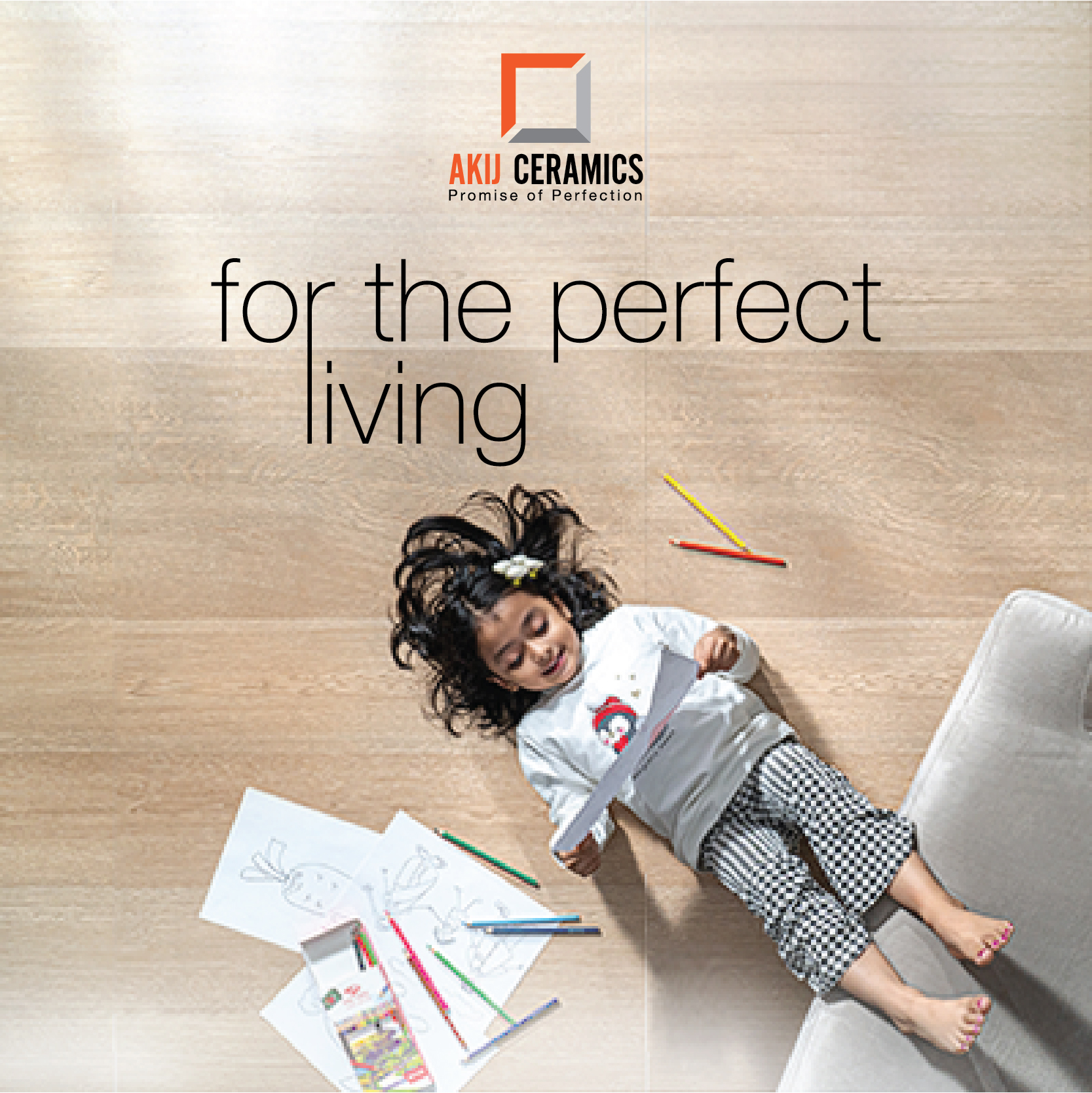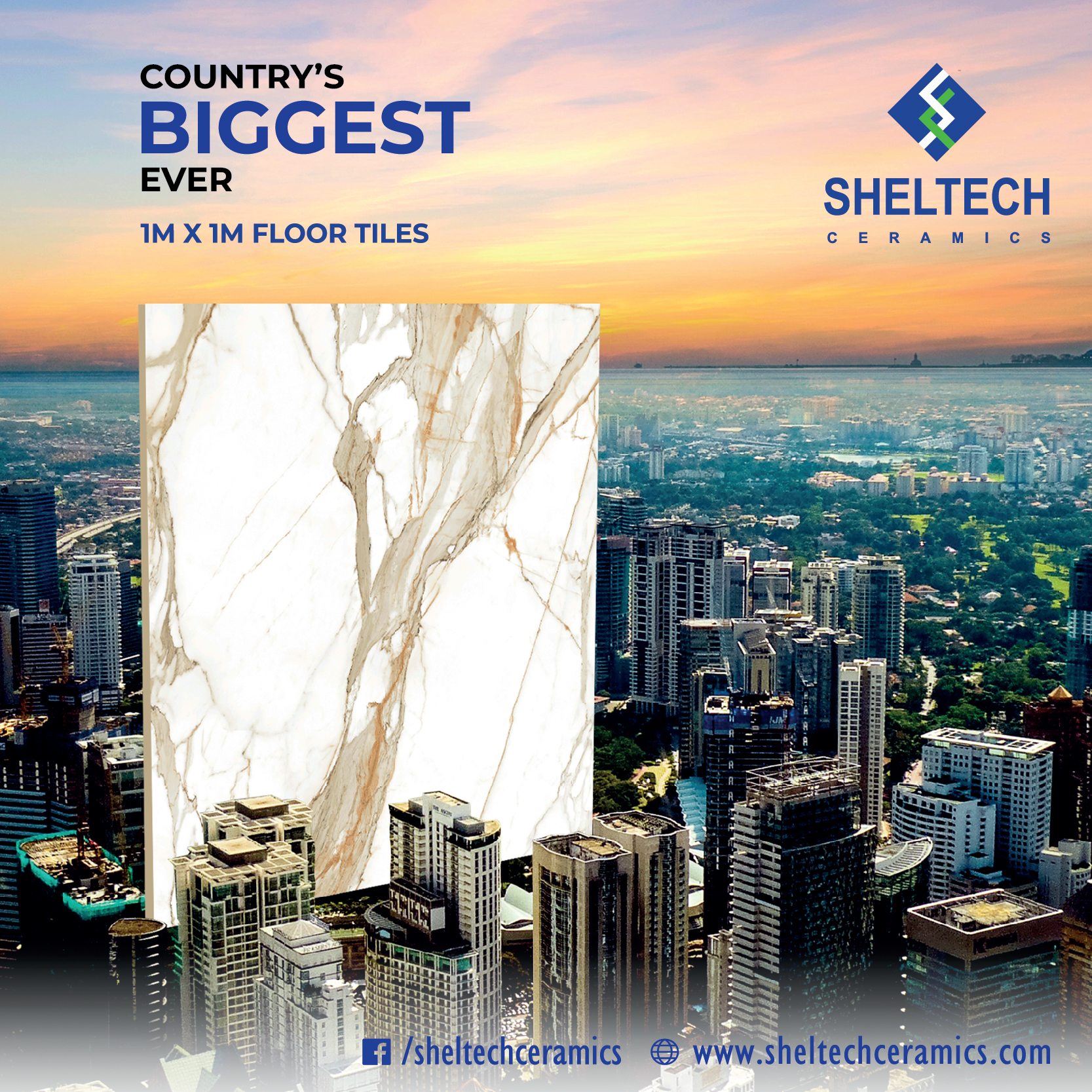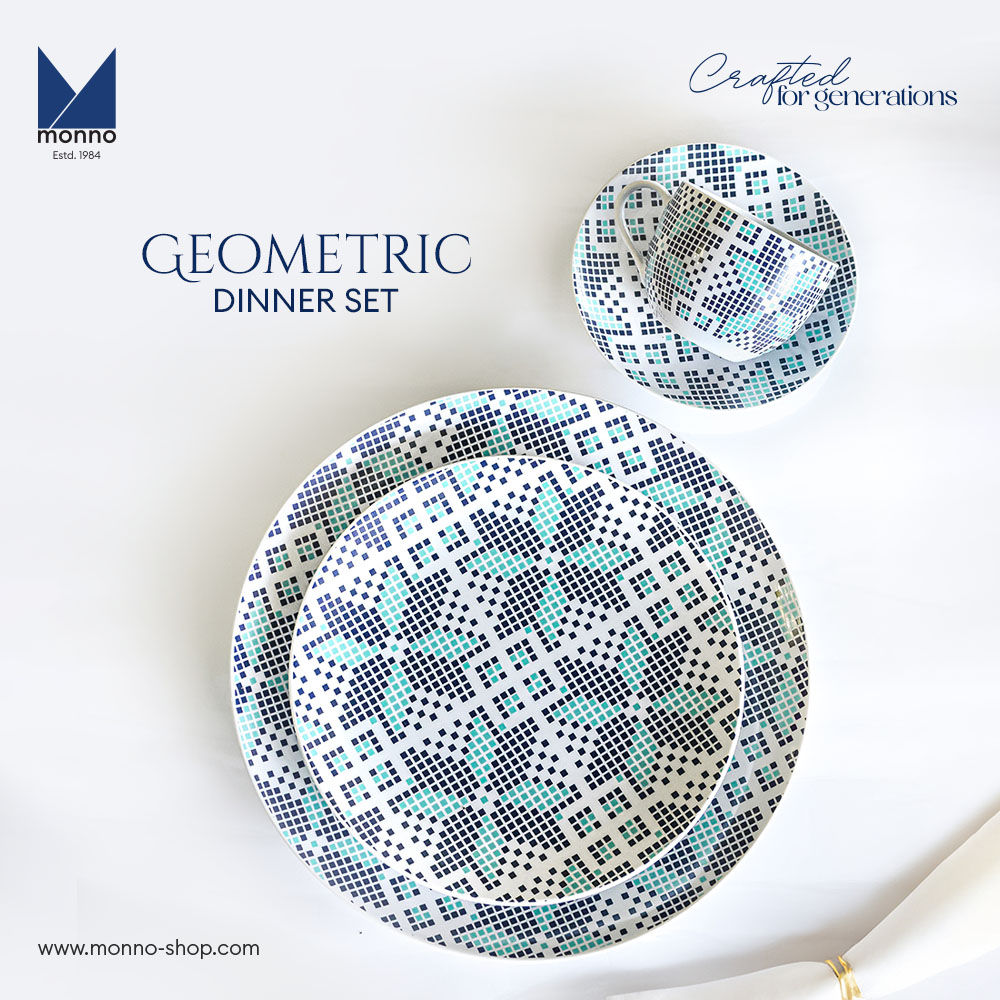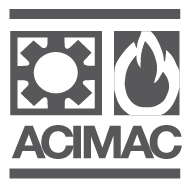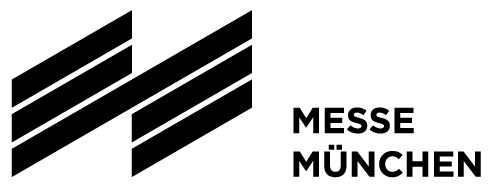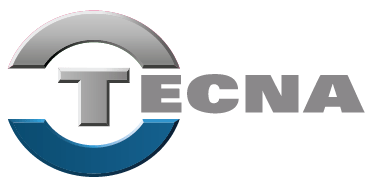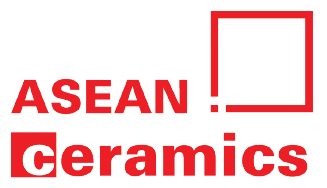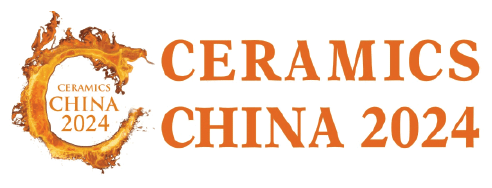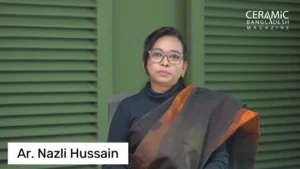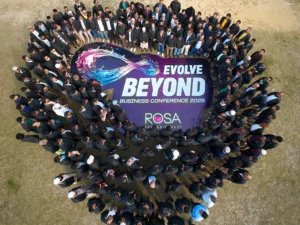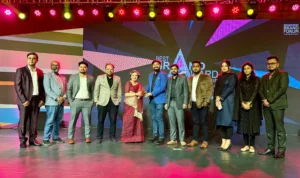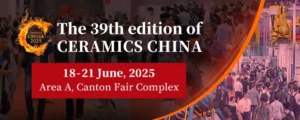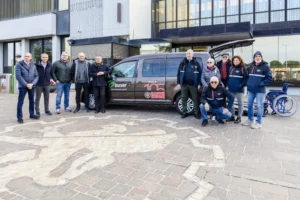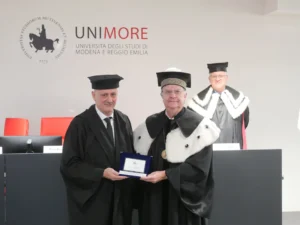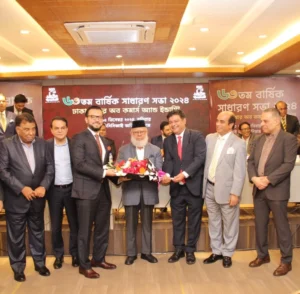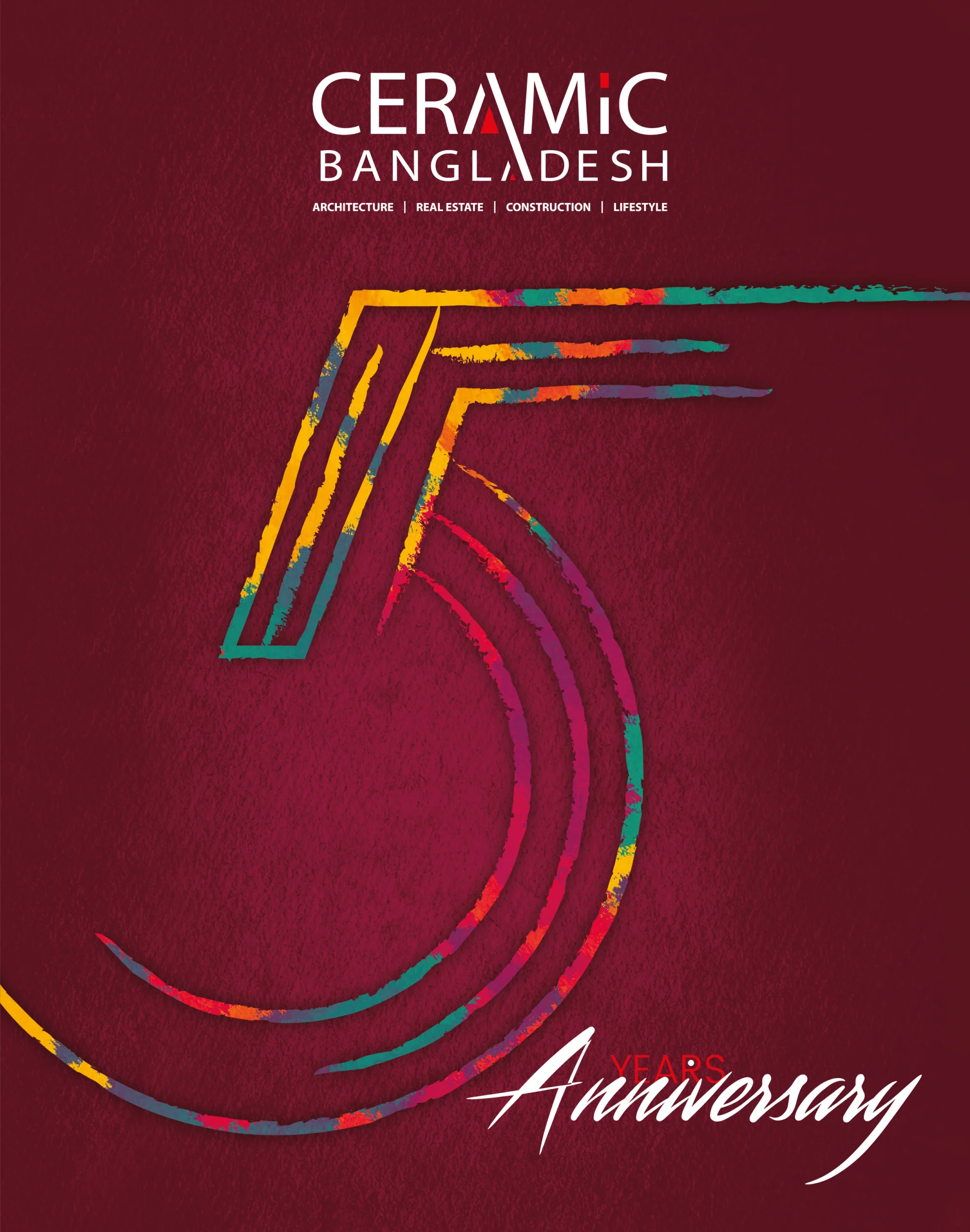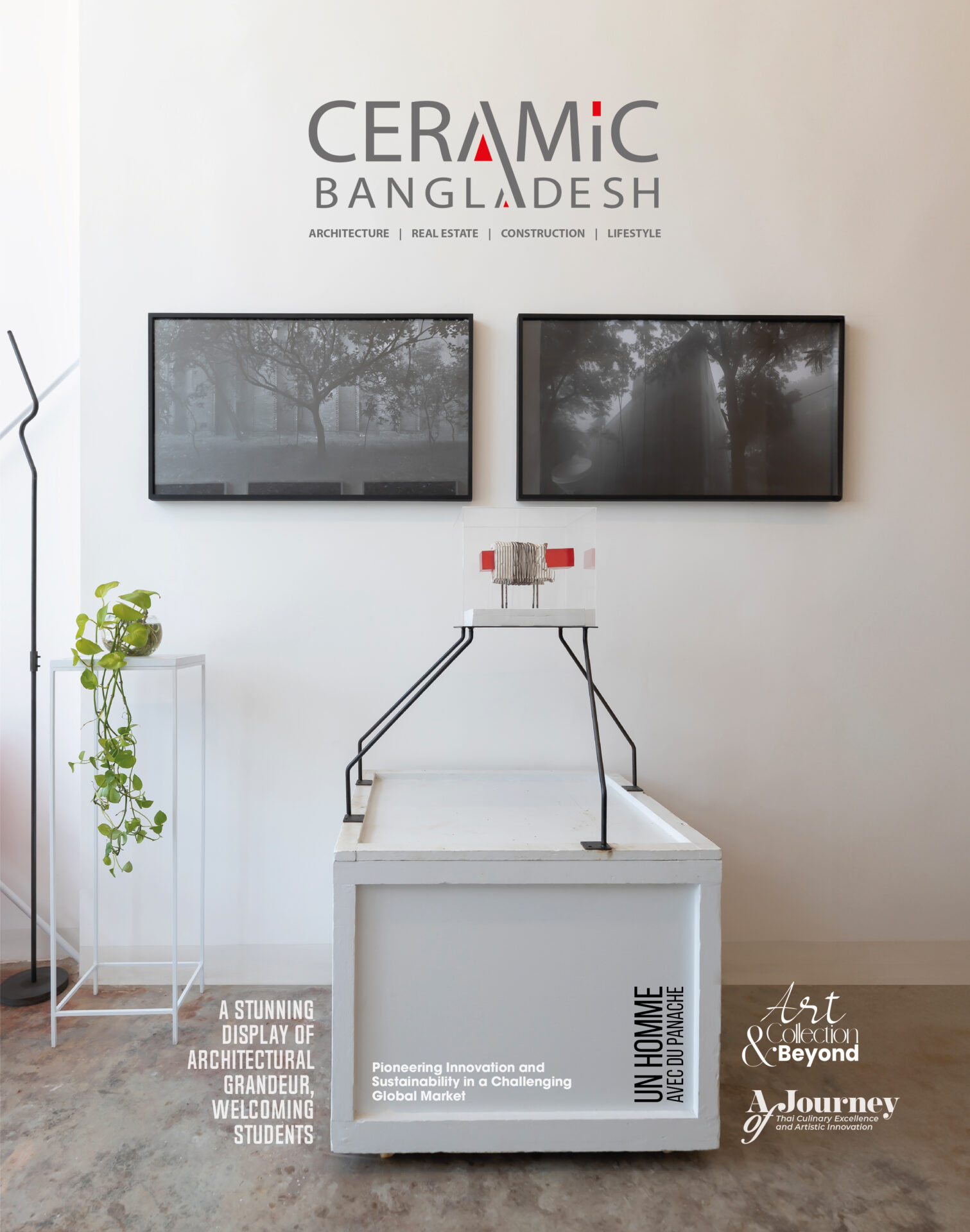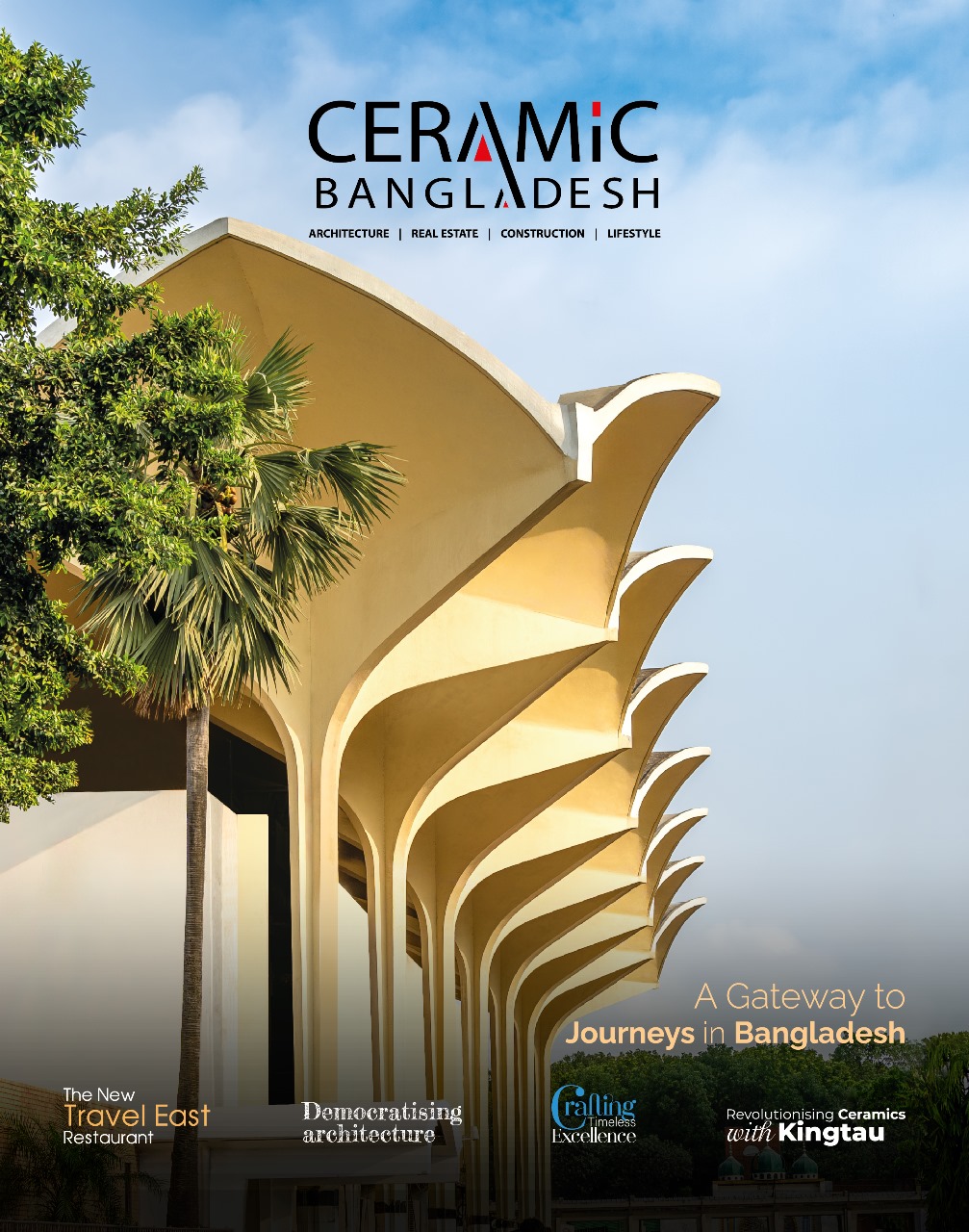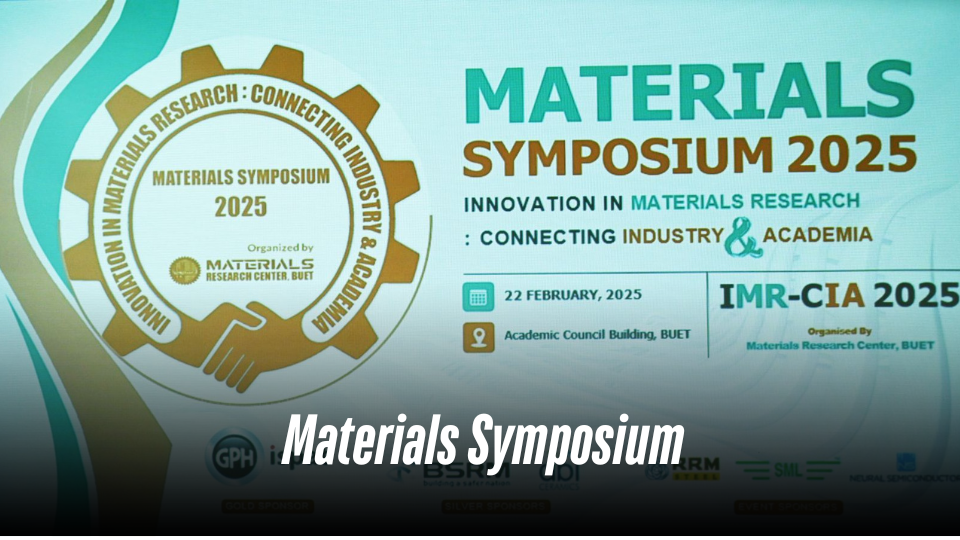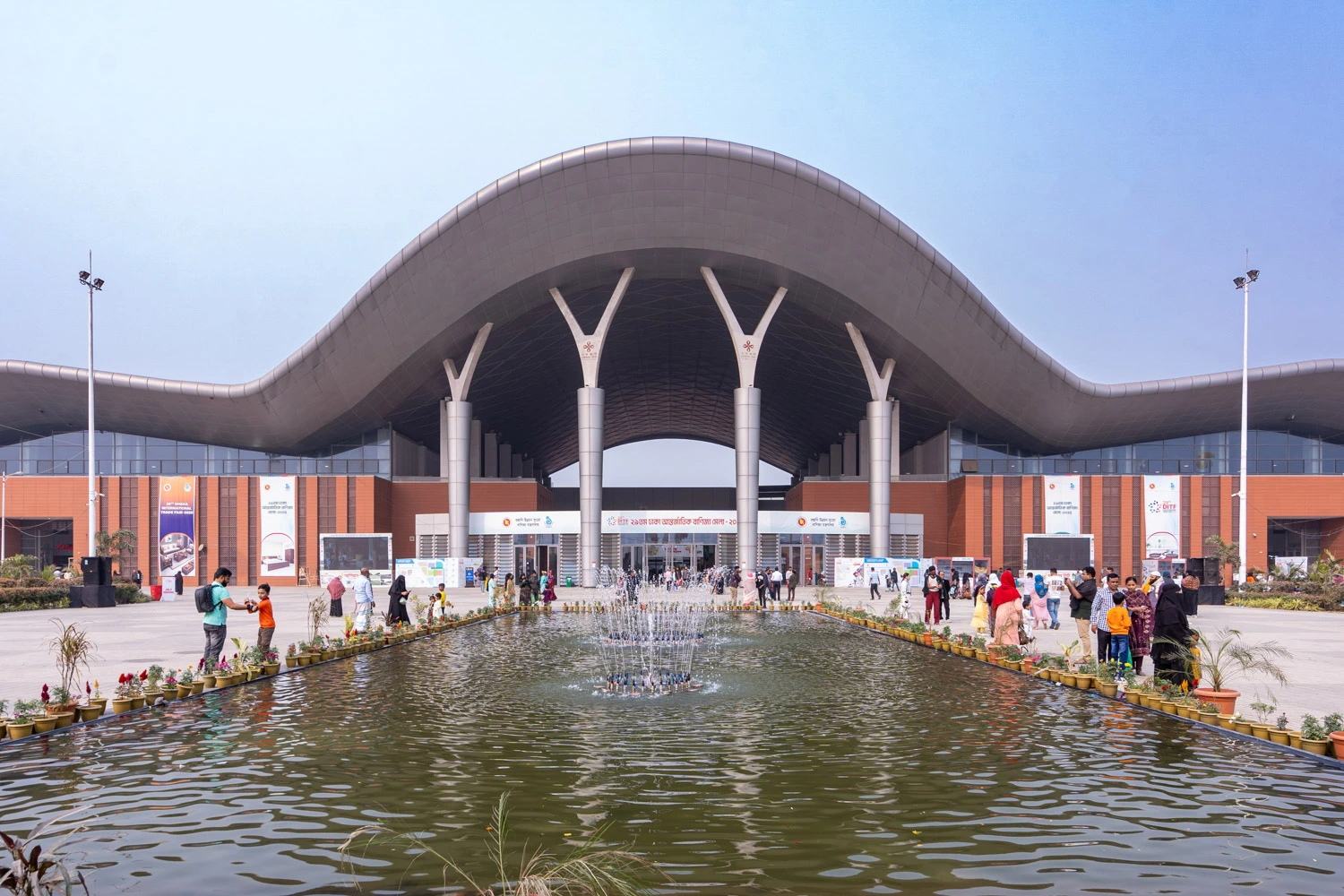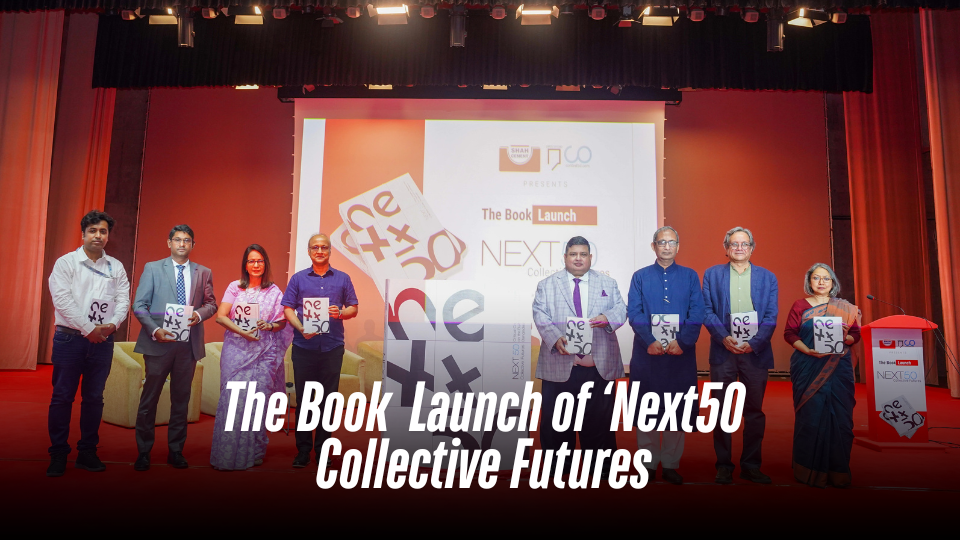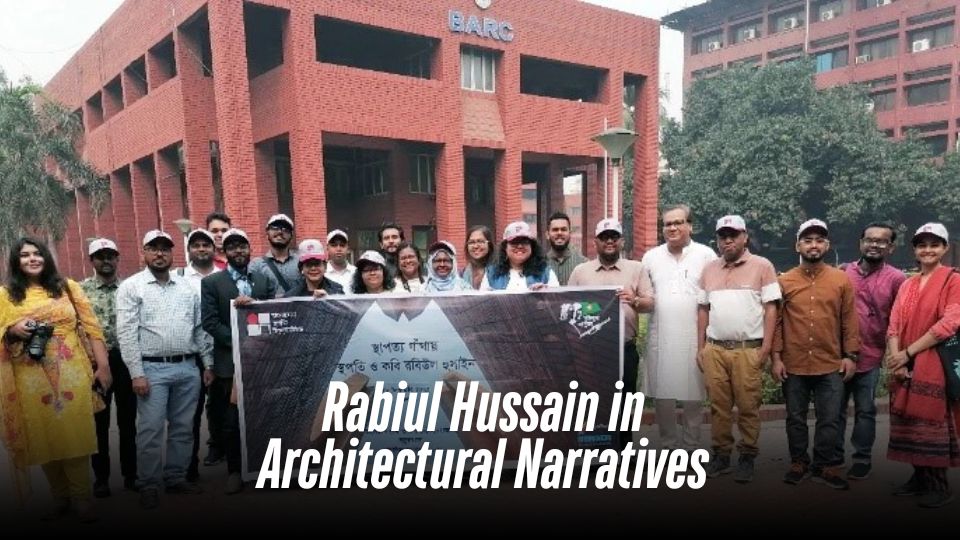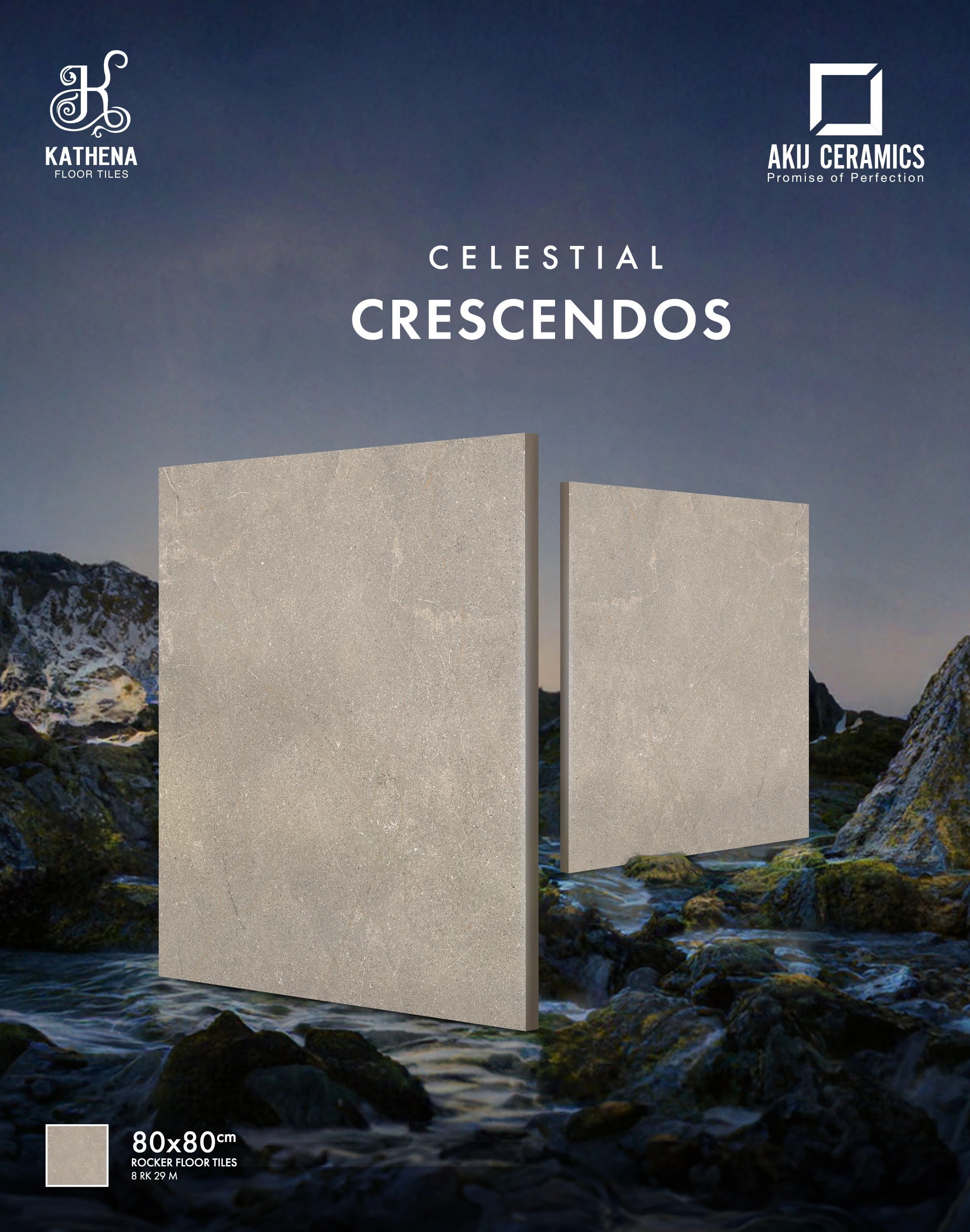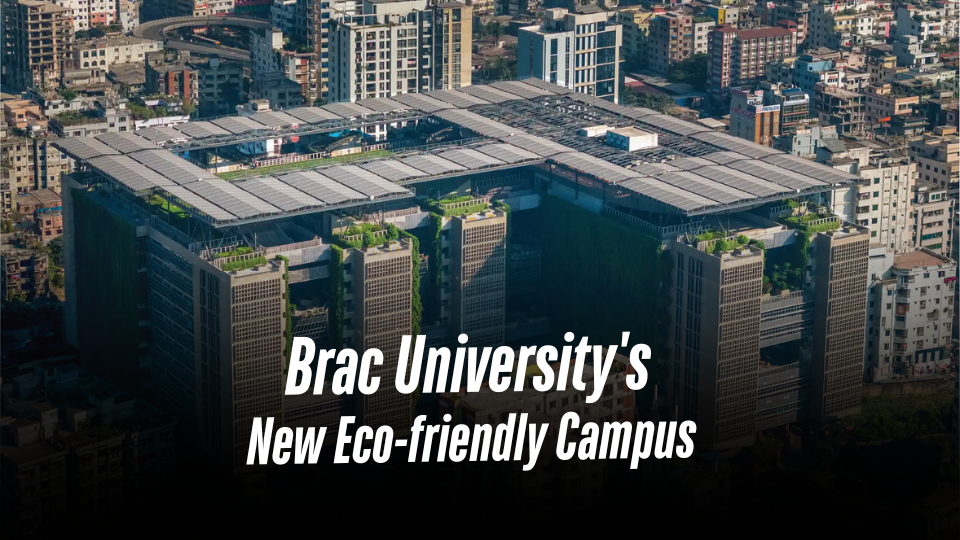
Brac University’s New Eco-friendly Campus: A Blend of Nature and Innovation
As you travel from Rampura to Badda in Dhaka, the imposing concrete structure in Merul Badda is hard to miss. Initially, it might seem like an industrial or commercial complex due to its sheer size on just 7 acres of densely populated land. However, its true purpose as a university is revealed once you step inside. The 'triple height space' design allows for free access to light and air, featuring long escalators connecting various parts, amphitheater-like stairs, and several 'urban
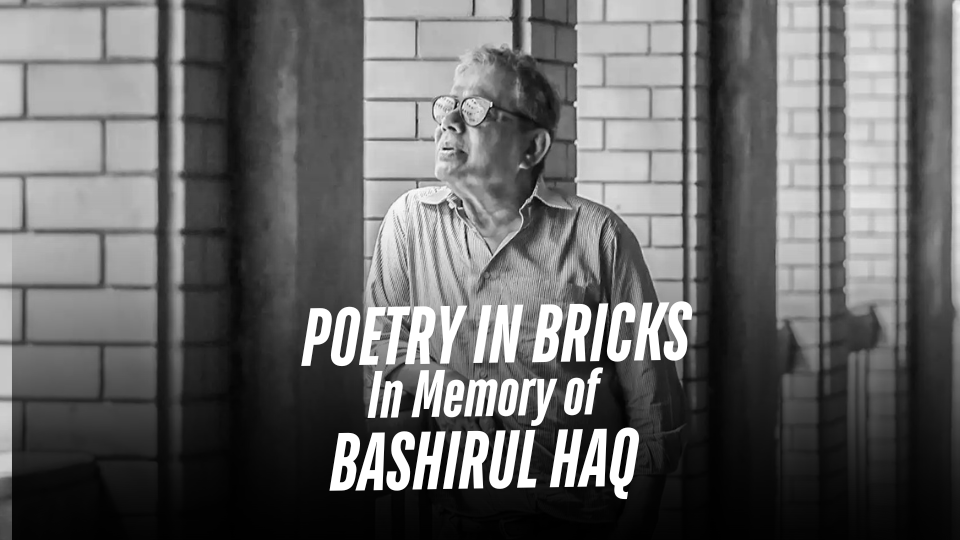
POETRY IN BRICKS: In Memory of BASHIRUL HAQ
Poetry in brick – is how a happy client described the house that Bashirul Haq had designed for them. This short write-up is an effort to describe this poetry and the process by which it was created. Bashirul Haq (1942-2020) had the good fortune to grow up in an idyllic rural environment, where he, unbeknownst to himself, imbibed how people could live in close harmony with the environs, where human habitation merged seamlessly with its surroundings, without disturbing it in
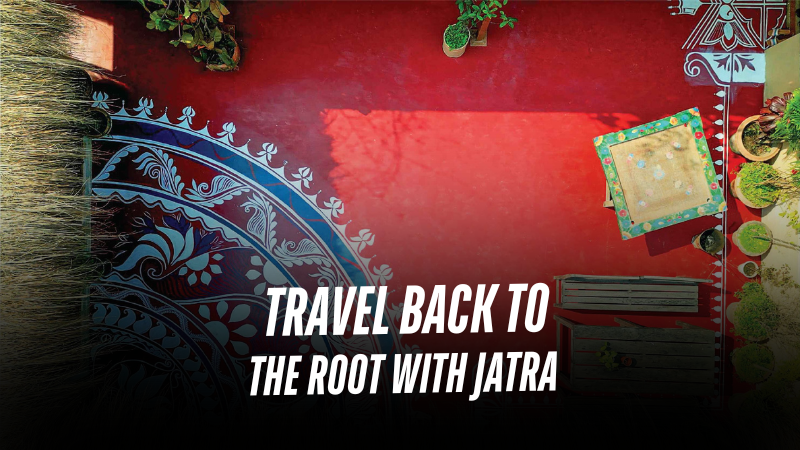
TRAVEL BACK TO THE ROOT WITH JATRA
For now, you forget that you are in Dhaka city and go back to the rural roots. Thankfully, Jatra has made it possible in this city. Amidst the rigid and chaotic city life of Dhaka, if you need a break, miss the rural natural vibe, and want to have a warm and cozy time with a vegetarian meal in a colorful, mesmerizing rural Bengal ambiance with folk music, then surely “JATRA” is the place to visit. Imagine, on
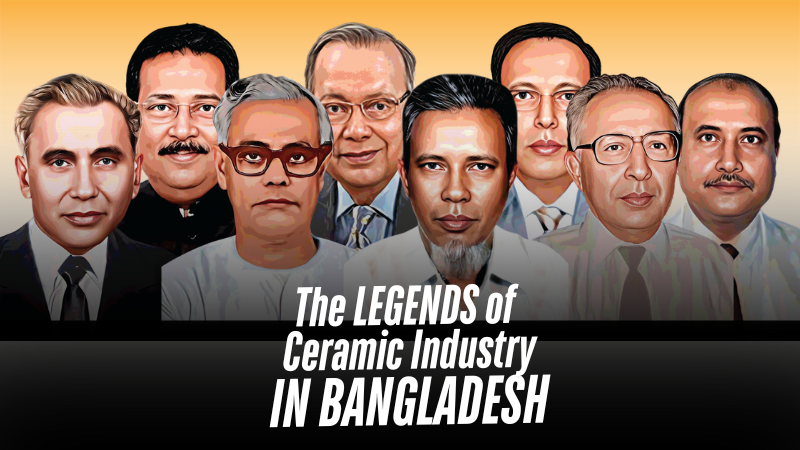
The LEGENDS OF CERAMIC INDUSTRY IN BANGLADESH
The ceramic industry in Bangladesh boasts a rich heritage and has produced several legends known for their significant contributions to ceramics and overall company formation. The industry has grown substantially over the past few decades, establishing itself as a leading sector in the country's economy. In 1992, with the rapidly growing ceramic industry, a nationally recognized trade organization of manufacturers and exporters of ceramic tableware, pottery, tiles, sanitary ware, insulators, and other ceramic products was formed, called the Bangladesh Ceramic
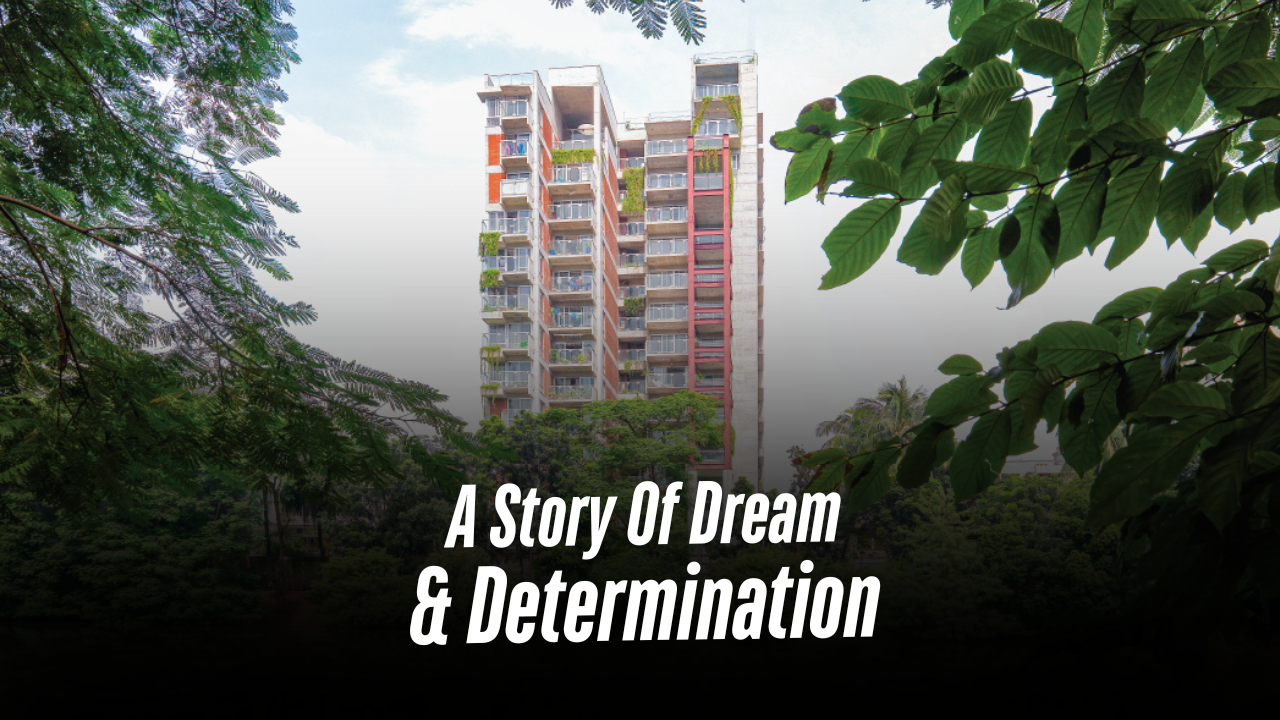
A Story of Dreams & Determination: South Breeze Housing Ltd.
In the growing heart of Dhaka in the mid-1990s, three brothers stood at the crossroads of ambition and legacy. Aminur Rahman Khan, Anisur Rahman Khan, and M. Ashiqur Rahman Khan were driven by the vision to create something extraordinary—something that would not only honor the legacy of their father, the late M. Abdur Rouf Khan, a pioneering businessman in Bangladesh’s shipping industry, but also transform the way people experienced home. With this dream, South Breeze Housing Ltd. was born in
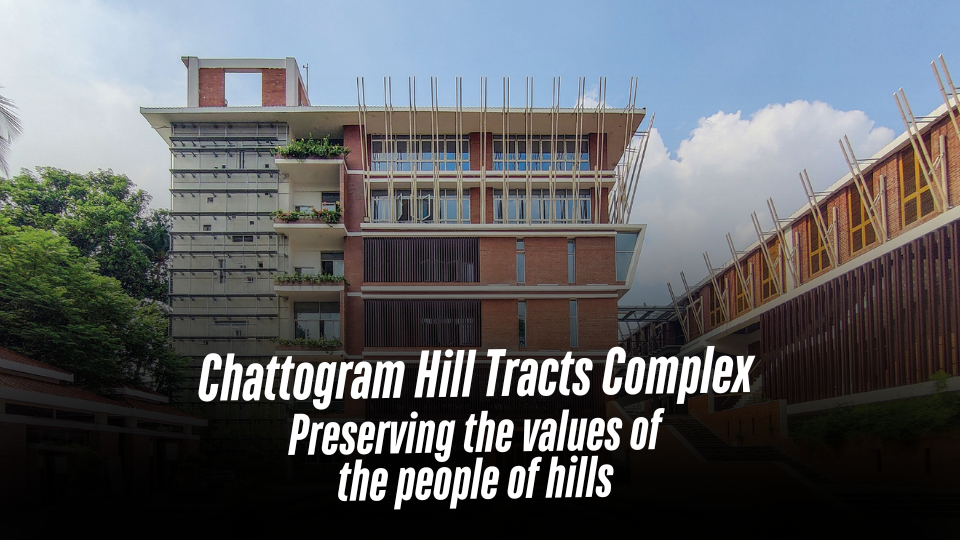
Chattogram Hill Tracts Complex: Preserving the values of the people of hills
The complex was designed with one mission in mind: to give visitors the impression that they are experiencing a piece of the Chattogram Hill Tracts right in the heart of bustling Dhaka. The complex serves as a pivot between the people, and architecturally, it has achieved in taking us close to experience Chattogram Hill Tracts without having to travel 300 kilometers. This cultural complex consists of an office building, library, multipurpose hall, amphitheater, restaurant, public plaza, sculptures, and water body

Brac University’s New Eco-friendly Campus: A Blend of Nature and Innovation
As you travel from Rampura to Badda in Dhaka, the imposing concrete structure in Merul Badda is hard to miss. Initially, it might seem like an industrial or commercial complex due to its sheer size on just 7 acres of densely populated land. However, its true purpose as a university is revealed once you step inside. The 'triple height space' design allows for free access to light and air, featuring long escalators connecting various parts, amphitheater-like stairs, and several 'urban

POETRY IN BRICKS: In Memory of BASHIRUL HAQ
Poetry in brick – is how a happy client described the house that Bashirul Haq had designed for them. This short write-up is an effort to describe this poetry and the process by which it was created. Bashirul Haq (1942-2020) had the good fortune to grow up in an idyllic rural environment, where he, unbeknownst to himself, imbibed how people could live in close harmony with the environs, where human habitation merged seamlessly with its surroundings, without disturbing it in

TRAVEL BACK TO THE ROOT WITH JATRA
For now, you forget that you are in Dhaka city and go back to the rural roots. Thankfully, Jatra has made it possible in this city. Amidst the rigid and chaotic city life of Dhaka, if you need a break, miss the rural natural vibe, and want to have a warm and cozy time with a vegetarian meal in a colorful, mesmerizing rural Bengal ambiance with folk music, then surely “JATRA” is the place to visit. Imagine, on

The LEGENDS OF CERAMIC INDUSTRY IN BANGLADESH
The ceramic industry in Bangladesh boasts a rich heritage and has produced several legends known for their significant contributions to ceramics and overall company formation. The industry has grown substantially over the past few decades, establishing itself as a leading sector in the country's economy. In 1992, with the rapidly growing ceramic industry, a nationally recognized trade organization of manufacturers and exporters of ceramic tableware, pottery, tiles, sanitary ware, insulators, and other ceramic products was formed, called the Bangladesh Ceramic

A Story of Dreams & Determination: South Breeze Housing Ltd.
In the growing heart of Dhaka in the mid-1990s, three brothers stood at the crossroads of ambition and legacy. Aminur Rahman Khan, Anisur Rahman Khan, and M. Ashiqur Rahman Khan were driven by the vision to create something extraordinary—something that would not only honor the legacy of their father, the late M. Abdur Rouf Khan, a pioneering businessman in Bangladesh’s shipping industry, but also transform the way people experienced home. With this dream, South Breeze Housing Ltd. was born in

Chattogram Hill Tracts Complex: Preserving the values of the people of hills
The complex was designed with one mission in mind: to give visitors the impression that they are experiencing a piece of the Chattogram Hill Tracts right in the heart of bustling Dhaka. The complex serves as a pivot between the people, and architecturally, it has achieved in taking us close to experience Chattogram Hill Tracts without having to travel 300 kilometers. This cultural complex consists of an office building, library, multipurpose hall, amphitheater, restaurant, public plaza, sculptures, and water body

Noubliez Pas Novera
THE WAYS NOVERA PLAYED WITH FORMS AND SHAPES ON HER BEST SCULPTURES HAVE AN INEXPLICABLE AURA THAT CAPTIVATES AND TAKES YOUR SOUL TO A SPACE THAT IS SOMEWHERE BETWEEN THE VAST ABSTRACT AND YET TANGIBLE. In August of 1960, on the ground floor of the Central Public Library building of the University of Dhaka, showcasing 75 of her artworks sculpted between 1956 and 1960, Novera Ahmed had her first solo exhibition titled “Inner Gaze." This formidable exhibition arguably sparked the

A stunning display of architectural grandeur, welcoming students
We are all familiar with the Dhaka University and its grandeur. Even now, when major infrastructures shroud the beautiful campus, its thousands of students still enjoy a little retreat among greeneries in, for example, Muktamancha or Suhrawardi Udyan. The same can also be said for all public universities. It’s on one such campus where BUET alum Khandaker Ashifuzzaman Rajon, Principal Architect of Cubeinside Design Limited, studied architecture. Of course, Rajon’s idea of a campus vastly differs from that of private

Paragon Ceramic, Pioneering Innovation and Sustainability in a Challenging Global Market
The global ceramic industry, including Bangladesh, is navigating a period of uncertainty due to economic slowdowns, fuel shortages, and inflation. However, Paragon Ceramic Industries Limited (PCIL) has managed to stand out as a leader in this competitive sector, driven by an unwavering commitment to quality and resilience. Below is a closer look at the company’s journey, challenges, and future plans as discussed by its Managing Director, Farian Yusuf. A Journey of Resilience and Early Success Founded in June 2008, Paragon

The Unfinished Mughal Fortress
Lalbagh Kella is perhaps the most quintessential remnant of the Mughal era in Bangladesh. Also known as Lalbagh Fort or Fort Aurangabad, it is a majestic historical site located in the heart of the old town of Dhaka. Built during the 17th century, Lalbagh Fort is a testament to the grandeur of this region’s rich history. Commissioned by Prince Muhammad Azam, the third son of Emperor Aurangzeb, it is also one of the most renowned Mughal structures in the subcontinent.

Art Collection & Beyond
Folk art, music, and other forms of art practices have a fairly long history and tradition in Bangladesh. However, there is still a lot of inconsistency about how we properly institutionalise, engage, and treat our own important art and artists, even though a lot of young people go to major exhibitions, mass concerts, and festivals every once in a while. Although there has been a noticeable improvement in the scene that developed in the past few years, especially in the

JBS Holding making Green Buildings
JBS Holdings Limited, a Japan-Bangladesh joint venture company, has been in the business of real estate industry, infrastructure development, commercial, and condominium ventures with the association and experience of professional experts and investors from Japan and Bangladesh. Since its inception in 2020, JBS has handed over more than 15 projects, till the end of 2023, to the satisfaction of customers. More than 300 engineers and employees are directly working in the company. The company’s maximum investment came from Japan. The

SOLARIC GROUP – DEVELOPS WORLD LARGEST SINGLE-SITE ROOFTOP SOLAR PROJECT
SOLARIC Group installed the world's largest industrial rooftop solar system in the Korean EPZ of Chattogram in 2020. The company has already completed 120 MWp of rooftop solar projects in the country and has created employment for more than 100 engineers and other professionals. In association with Infrastructure Development Company Limited (IDCOL) through multiple NGO’s, SOLARIC Group supplied more than 5 lakhs solar home systems in villages across the country. The most iconic project that has been developed at KEPZ-50MWp

7 Ceramic Events worldwide
The Ceramic exposure and trade fair events across the globe have always been the best mean to interconnect the ceramic verse. The expos are usually a few days long, and as seen in Bangladesh and globally, they are jam packed with buyers, industrialists, business officials, architects and real estate personnel, along with visitors who are enthusiasts. The stalls are local and international businesses showcasing the best and the latest. Visitor count in such an event can reach up to and

Meet Architect Salauddin Ahmed- UN HOMME AVEC DU PANACHE
Many people spend their entire lives believing that the arts and music are completely different from the hard sciences, which include physics, chemistry, engineering, and even architecture. But are they really? Enter architect Salauddin Ahmed’s Atelier Robin Architects (ARA) in Hazaribagh and marvel in the atelier’s (French for studio) all-white, lofty, and expansive interior. You will see that architecture is not truly that far from art, if at all. Walking into Salauddin’s studio was in part equivalent to getting a

Graffiti Of Revolution
The essence of what Bangladesh witnessed last July-August, during a student-led protest, which emerged to a mass rage, turned into a blood-shading revolution. Eventually, it brought us what we now call a new Bangladesh. All that went through is difficult to put into words. Every single individual who was somehow part of the revolution—the ones who were out in the streets and directly witnessed both the brutalities and the togetherness of people; those who gave shelter and food to the

A Journey Of a Thai Culinary Excellence of and Artistic Innovation
We are sure that there are times when you crave some good tangy Thai flavours and also miss the vibrant experience of street life in Thailand. Naming from the famous street of Bangkok, Khao San is such a place where you can meet both. Founded by four friends – Bushra Haque Sarah, Syed Sameem Shahriyar, Taposh Ghosh, and Mustafid Raiyan Khan—Khao San is more than just a dining spot; it's a passion project. After gaining popularity in Dhanmondi, Khao San

Of trinkets, chandeliers and everything be dazzling
Your home decor is an extension of your personality and style. It's a reflection of your tastes, preferences, and values. Believing in the notion, Satori started its journey in 2012, to provide city dwellers with start-of-the-art home decor items. Conceptualized and founded by Shaon Tanvir, Satori is a pioneering brand in the world of high-end home decor items. All of its products are handpicked and imported from Dubai, Thailand & China based on customers' demand. Currently, they have three branches

TANGUAR BLUES
If you have ever had the blessing to travel extensively in Bangladesh, there is something in particular about her geography that you must have noticed: the plethora of her beautiful waters. Being the largest delta on earth, perhaps it is unsurprising that Bangladesh has her own unmatched collection of breathtaking, fericious, and soothing wetlands, rivers, and other different types of water bodies, and of course the mighty Bay of Bengal, where every drop meets. A notable part of Bangladesh’s water

Kamalapur Railway Station: A Gateway to Journeys in Bangladesh
Kamalapur Railway Station, officially known as Dhaka Central Railway Station, stands as a bustling gateway to the vibrant capital city of Dhaka. Nestled in the heart of the city, this vital transportation hub connects travellers to all major cities in Bangladesh. As the largest and busiest railway station in the country, Kamalapur serves as a crucial link, facilitating journeys both near and far. Its rich history, architectural significance, and constant activity make it an iconic landmark. With a unique design

Kamalapur Railway Station: A Gateway to Journeys in Bangladesh
Kamalapur Railway Station, officially known as Dhaka Central Railway Station, stands as a bustling gateway to the vibrant capital city of Dhaka. Nestled in the heart of the city, this vital transportation hub connects travellers to all major cities in Bangladesh. As the largest and busiest railway station in the country, Kamalapur serves as a crucial link, facilitating journeys both near and far.

Democratising architecture: Design that inspires awe and closeness to home
It was as though the beauty, heritage, and history of Mymensingh were plotting the becoming of Architect Masudur Rahman Khan – his birth city. Growing up in vast and glorious Mymensingh, which runs along Old Brahmaputra’s shores and birthed the Nakshi Kantha, Maimansingha Gitika and Shilpacharya Zainul Abedin, the BUET-alum Architect fashions his edifices from the collective memories of his childhood.

Crafting Timeless Excellence
BHL CERAMICS, the flagship brand owned by BHL GROUP Pvt. Ltd., has evolved over three decades as a dynamic business house and consumer products manufacturer. Since its inception in 2017, BHL Ceramic Co. Ltd. has become one of Bangladesh’s largest ceramic tile manufacturers, symbolizing artistry and creativity. The company’s mission is to reduce reliance on imported foreign tiles and boost domestic production, creating employment opportunities.

National Budget Thru Turbulent Waters Ceramic Industry Ignored in Budget
The recently unveiled Tk 7.97 trillion national budget for the 2024-25 fiscal year for Bangladesh aims to bringing a balance between controlling inflation and attaining economic growth. Economists, however, caution that higher borrowing and increased taxes on certain goods may prolong inflationary pressures. The budget's reliance on domestic borrowing could lead to a "crowding-out effect," restricting financing for businesses, particularly SMEs. Despite a target of 6.75 per cent GDP growth and plans to reduce inflation to 6.5 per cent, achieving

A Guide before choosing your Sanitaryware
A home needs innovative ceramic ware and everybody looks for a touch of elegance, style, and personalisation. While the design of the ceramic ware is a personal choice within whatever fits the budget, ignored, sometimes, are the sanitary ware used. However, a lot has changed over the past few decades, as the market grows – People care not only for a well-designed bedroom, but also their bathroom.

Ayesha Sanaa Asif Tabani Steps up with Sophistication Upholding Legacy of Founding Fathers of the Pioneering Ceramics Company
As the Director of Mirpur and Khadim Ceramics, Ayesha Sanaa Asif Tabani has already been an influential figure in the ceramic industry, championing the integration of modern and innovative ceramic technologies. After completing her graduation and Master’s at Queen Mary University of London, she returned home to join the family business.

Revolutionising Ceramics with Kingtau Low Maintenance Ceramic Printing Machine
As cutting-edge technology enters into the ceramics industry, tile manufacturing processes are undergoing significant transformation. Only a few years ago, the idea of machinery capable of producing effects such as sugar textures, embossing, matte finishes, and mirror-like polish seemed unimaginable.

Journey of the CEO of Fu-Wang Ceramic Teamwork Makes a Company Successful
A world where the demand for ceramic products is steadily on the rise, it takes innovation, commitment, and most importantly, a dedicated team to navigate the challenges and lead a company to success. Rafiquzzaman Bhuiyan, the Chief Executive Officer (CEO) of Fu-Wang Ceramic Industry Limited (FWCIL), has not only recognised this but also executed a vision that has propelled the company to new heights.

An ode to a bold architectural narrative The New Travel East Restaurant
At the heart of any remarkable restaurant lies its design—a subjective blend of form and function. The design itself becomes a storyteller, weaving narratives of contemporary tradition. The walls, the textures, the colours—they all tell a story.

Ceramic Expo Bangladesh-2022 Contribution of Foreign Co-Sponsors
Ceramic Expo 2022 was a remarkable event for the ceramic industry to explore new business opportunities for exhibitors and visitors. It was a 3-day-long event with more than 25,000 visitors and an excellent arrangement by the organiser, Bangladesh Ceramic Manufacturers and Exporters’ Association (BCMEA).

BHAWAL RESORT: A Tranquil Heaven Outside Urban Chaos
Nestled amidst the lush rainforest, the Bhawal Resort of Bangladesh emerges as a green heaven where luxury meets tranquility, offering an escape to the serene beauty of nature. In the Bhawal Resort and Spa, one can discover the idyllic bliss that defines the new dimensions of luxury in the setting of nature. Surrounded by the exotic natural rainforest, the resort is the perfect place to rejuvenate the body, mind, and soul. Here the luxury intertwines the serenity of nature for an immersive back-to-nature experience.

Rise of a Nation through Raghu Rai’s lens
On the occasion of the 75th anniversary of the Faculty of Fine Arts, University of Dhaka, the exhibition “Rise of a Nation” took center stage at the Zainul Gallery.

Akij Ceramics Expands Retail Footprint with New Showrooms in Cumilla and Feni
Akij Ceramics, the leading brand in the ceramic tiles industry in Bangladesh, has recently opened two exclusive showrooms — one in Cumilla and the other in Feni. As a five-time recipient of the Best Brand Award and the Super Brand Award, Akij Ceramics consistently sets the standard for quality and innovation in the country. Its unwavering commitment to the “Promise of Perfection” resonates with clients across Bangladesh.

Exploring Innovations at the BIID Expo
The Bangladesh Infrastructure Innovation and Development (BIID) Exhibition, held from May 9th to 11th, 2024 in Dhaka, gained significant momentum. Organized by ExpoNet Exhibition Pvt. Ltd at the Bangabandhu International Conference Center (BICC), this three-day event brought together industry owners, professionals, and stakeholders from various sectors.

The Journey of Ceramics in Bangladesh
The origin of pottery in Bangladesh dates back to the later or post Mohenjo-daro and Harappa civilization and to the Indo-Aryan Vedic age, according to the research on ceramic earthenware and artifacts found after excavation of the ruins in Mahasthangarh of Bogura and Wari-Bateshwar in Narsingdi. Discoveries in Wari-Bateshwar included two millennium old potteries and terracotta. The potters then used traditional methods to make water vessels and sculptures for worshipping and as household utensils and showpieces. In the medieval age,

A Bridge to Prosperity – From Transport Connectivity to Economic Corridor
The opening of the Padma Bridge has created the scope for a new wave of investment in the country’s south and south-western region. The region’s easier road communications with the rest planned and tourism sector entrepreneurs are hoping for a business boom surrounding Kuakata sea beach and the Sundarbans. Thus, the bridge has offered a new economic corridor in the making. Economists and business leaders believe with remarkable improvement in road network though the bridge trade and business in the

Architect Muzharul Islam
Beyond his role as an innovative architect, Muzharul Islam was characterised by humility and an unassuming nature. His consistent choice of traditional clothing and a preference for a modest lifestyle indicated a deep commitment to his craft rather than a pursuit of personal recognition. The simplicity and focus on perfection in his work underscored the profound impact of his architectural contributions, and the enduring prominence of his legacy in South Asian architecture speaks volumes about his unwavering dedication and passion.

Fu-Wang Ceramic Industry A Journey of Resilience and Growth
FU-WANG Ceramic Industry Limited, founded in 1995 as a joint venture between Taiwan and Bangladesh, has evolved into a major player in the ceramic industry. Despite Taiwan investors’ departure in 2008, the company continued to thrive, reshaping the landscape of ceramic production in Bangladesh. During the 1990s, Bangladesh heavily relied on ceramic imports from countries such as China, Sri Lanka, Spain, and Italy. Fu-Wang entered the market and made a significant impact. Subsequently, other prominent players like RAK, CBC, and

Silence, an Integral Aspect of ARCHITECTURE
As Nurur Rahman Khan commenced his discussion on architecture, a concept exists only as an idea that becomes apparent once it is created. Attaining the deep level of architecture requires a great deal of time, attention, and meditation. If we wish to reach that level of it, we must bring our soul to it. It could be difficult for the public to comprehend or accept it entirely. Nurur Rahman Khan began his architectural career at Bangladesh University of Engineering and

Remains of ARMENIA
As you walk through that particular street of Armanitola where the Armenian Church has been perching for almost two and a half centuries, its white coloured skin subtly piercing you with an invitation to enter inside, a peculiar sillage coming to life from the hundreds of variants of notes from the line of perfume shops beside, mixed with the eerie scents carried by the winds flowing over the Buriganga which is just within a minute of walking distance, will hit

Innovation unleashed at the Ceramic Expo Bangladesh-2022
The first few teasers of the Ceramic Expo Bangladesh-2022 ushered in the forthcoming of one of the biggest and highly anticipated ceramic events in the country. The event took place in ICCB, Dhaka, from 24-26 November, 2022, and was buzzing with visitors all three days. The Ceramic Expo housed 120 exhibitors, 300 brands from 20 countries, and 500 delegates, along with a whopping 23,000 visitors. It brought under one roof exporters, manufacturers and suppliers of ceramic and related products. During

Shahjalal Bank First Green Building in the Banking Sector of Bangladesh
Shahjalal Islami Bank PLC is playing an important role in providing investment in all areas of manufacturing and service sectors, ready-made garments, trade financing, infrastructure and agriculture. Starting operations on 10 May 2001, the bank is running with 12,40,000 deposit and investment customers. As a third generation Islamic Shariah-based private commercial bank of the country, Shahjalal Islami bank plc has reached a strong position within a short span of time and has been playing a worthy role in the economic

Dream Train in the City of Oysters
Cox’s Bazar Rail Station has been built as a modern marvel for travelers.
Spotlights

‘The Story of Art’ exhibition: Of art and altruism
Organized by Dhaka Storytellers from February 8 to February 13, the lush gallery space Aloki Greenhouse in the capital’s Gulshan hosted an exhibition titled The Story of Art. The exhibition boasted a stunning collection of 80 to 90 artworks, captivating audiences for a week. Curated by Syeda Adiba Hussain, co-founder of Dhaka Storytellers, The Story of Art was more than just a display of artistic excellence. This was Dhaka Storytellers’ second art event, following the charity exhibition Art for Charity in August 2024. In the same vein, The Story of Art supported a larger cause, with a portion of the proceeds donated to five schools and one college in Sylhet, demonstrating the power of art to create tangible change beyond gallery walls. Beyond the beauty of its displays, the exhibition underscored the immense power of art to inspire and drive change. By merging artistic excellence with humanitarian efforts, it aimed

Materials Symposium: Pioneering the Future of Materials Science Through Innovation and Collaboration
With the aim of connecting academia and industry, the Bangladesh University of Engineering and Technology (BUET) hosted the Innovation in Materials Research – Connecting Industry and Academia (IMR-CIA 2025) symposium on February 22, 2025. The one-day event, held at BUET’s Academic Council Auditorium, brought together leading scientists, engineers, and industry pioneers to explore advancements in materials science and their real-world applications. Chaired by Dr. Fahmida Gulshan, Professor, Department of Materials and Metallurgical Engineering, BUET and co-chaired by Dr. Muhammad Hasanuzzaman, Associate Professor, Department of Nanomaterials and Ceramic Engineering, BUET, the symposium was organized by a distinguished committee of Materials Research Centre, BUET, composed of experts in the field of materials science. The chief patron of the organization is Prof. Dr. A.B.M. Badruzzaman, Vice-Chancellor, BUET. The symposium was presided over by Dr. Fahmida Gulshan. It commenced with a welcome speech by Dr. Muhammad Hasanuzzaman. Prof. Dr. A.B.M. Badruzzaman, gave his speech as the chief guest. A plenary speech was then delivered by Prof. Dr. A.S.M.A. Haseeb, Head, NCE, BUET, Bangladesh. The event featured experts from both academia and industry, who shared insights on the latest breakthroughs in materials science, manufacturing innovations, and strategies to foster collaboration between research institutions and corporate enterprises. The symposium focused on four major themes, each representing a crucial area in modern materials research: Steel: With sustainability in focus, discussions delved into emerging high-strength steels for automotive and construction applications, innovations in steel recycling and green steel production, and advanced corrosion-resistant coatings. Ceramics, Glass, and Cement: Industry leaders highlighted advancements in energy-efficient manufacturing, AI-automated process optimizations, product diversification and waste utilization strategies for economic and environmental benefits. Semiconductors: With the global chip shortage still a concern, speakers discussed the challenges in semiconductor scaling, the role of advanced materials in next-generation electronics, and sustainable manufacturing practices. Additive Manufacturing: Experts showcased breakthroughs in 3D printing for industrial applications, material characterization, and AI-enhanced manufacturing processes, emphasizing its potential to revolutionize supply chains. Renowned experts from leading organizations and academic institutions delivered keynote speeches on groundbreaking advancements in materials science and manufacturing. They were – from Intel Corporation. USA – Dr. Zakir Ahmed, Research Scientist, Intel Labs; Dr. Md Waliullah Khan Nomani, PTD Module and Integration Yield Engineer, PTD; Dr. Shaestagir Chowdhury, Principal Engineer; Dr. Syed Samsul Amin, Principal Engineer & Packaging Architect. Other honorable speakers included Dr. Kafil M. Razeeb, Principal Scientist and Team Leader, Tyndall National Institute – Cork University, Ireland; Prof. Dr. Syed Ansar Md. Tofail, Head, Physics, University of Limerick, Ireland; Mr. Mohammad Zahirul Hoque, Director, Q.C. Metallurgical Laboratory, Inc, IOWA, USA; Dr. Ehtsham-Ul Haque, Assistant Professor, Dept. of Physics, University of Limerick, Ireland; Dr. Nazmul Alam, Principal Research Scientist (Retd.), CSIRO, Adjunct Professor, RMIT University, Australia; Dr. Md Zakaria Quadir, Associate Professor, School of Civil and Mechanical Engineering (CME), Curtin University, Australia; Dr. Qumrul Ahsan, Vice-Chancellor, University of Asia Pacific, Bangladesh; Dr. Sheikh Manjura Hoque, Head, Materials Science Division, Atomic Energy Commission, Bangladesh. The symposium also hosted specialized panel discussions featuring leading academics and industry professionals in the steel, ceramics, semiconductor, additive manufacturing fields. Steel Industry Panelists included Dr. Sazzad Ahmed, Associate Professor, MME, CUET, Bangladesh and Mr. Md. Saiful Islam, Deputy General Manager, Research and Development, GPH Ispat Limited, Bangladesh. From Semiconductor Industry Panel, Dr. Mainul Hossian, Associate Professor, EEE, DU, Bangladesh and Dr. Kafil M. Razeeb, Principal Scientist and Team Leader, Tyndall National Institute-Cork University, Ireland gave their speech. Additive Manufacturing Panelists included Dr. M. Tarik Arafat, Head, BME, BUET, Bangladesh, Dr. Md. Jalal Uddin, P. Eng., Director, BITAC, Bangladesh, Dr. Md Zakaria Quadir, Associate Professor, School of Civil and Mechanical Engineering (CME), Curtin University, Australia. The Ceramics Industry Panelist was senior journalist Mr. Anwar Haq, Head of Brand, Communication & Corporate, Pa-Wang Ceramic Industry Ltd., Bangladesh. And, the Entrepreneurship Panel was comprised of Engr. Md. Fahim Rahman, Head of Operations, METTALLIED, Bangladesh. The symposium also served as a platform for young researchers, with a competitive poster competition drawing entries from students across multiple disciplines. The top ten posters received recognition awards, while the top three submissions were awarded BDT 25,000, BDT 15,000, and BDT 10,000, respectively. This initiative provided an incredible opportunity for young researchers to showcase their work and gain insights from seasoned professionals into the evolving landscape of materials science. A recurring theme of the symposium was the urgent need to strengthen partnerships between industry and academia. Speakers emphasized that collaborative research, workforce development, and industry-driven projects are crucial to accelerate technological progress. Case studies from companies like Intel Corporation and GPH Ispat Ltd. demonstrated how industry collaborations have turned theoretical research into practical applications. With its blend of insightful discussions, expert panels, and student engagement, IMR-CIA 2025 successfully established a precedent for future collaborations between academia and industry. At its core, this was more than just a symposium—it was a call to action for the next generation of innovators. Speakers emphasized the need for young minds to embrace cutting-edge technology, think beyond conventional boundaries, and actively contribute to scientific advancements. By fostering collaboration between industry and academia, the event aimed to create an ecosystem where students, researchers, and professionals can work together to drive transformative change in materials science and engineering. As Bangladesh moves toward an innovation-driven economy, the knowledge shared at this symposium is expected to play a crucial role in achieving sustainable advancements in materials science and manufacturing.

The state-of-the-art pavilions draw huge crowds at DITF-2025
With a view to attracting local and foreign visitors, the exhibitors of the month-long 29th Dhaka International Trade Fair (DITF)-2025 brought innovative architectural view at their pavilions and stalls made of various materials such as steel, board, wood, bamboo, electric cables, lights, colour and ceramic items. Chief Adviser to the Interim Government Prof Dr Muhammad Yunus inaugurated the fair at the Bangladesh-China Friendship Exhibition Centre in Purbachal, Narayanganj on 1 January, 2025. Commerce Adviser Sk Bashir Uddin and Export Promotion Bureau (EPB) Vice-Chairman Md Anwar Hossain also attended the opening ceremony. This year, 343 domestic and foreign companies took part in the fair, including 11 companies from India, Pakistan, Turkey, Singapore, Indonesia, Hong Kong and Malaysia in addition to Bangladesh. Last year, 304 companies participated in the fair, including 9 foreign companies from 5 countries. The companies set up premium pavilions, mini pavilions, and reserved pavilions at the fair venue to display various products including textiles, furniture, electrical and electronics, jute and jute products, leather products, machineries, cosmetics, home furnishings, toys, stationery, crockery, plastics, melamine, herbal and toiletries, imitation jewellery, processed food, fast food, and handicrafts. Of them, many exhibitors also offered discounts ranging from 5 to 50 per cent as well there to attract more buyers. The Ministry of Commerce and EPB have organised DITF since 1995 to promote export growth and market diversification. This is the third edition at its new venue in Purbachal, following the relocation from Sher-e-Bangla Nagar in 2022. Pavilions and stalls were awarded due to innovative architectural view The best pavilions, stalls and organizations participating in various categories were recognized by presenting crests at the closing ceremony of the fair. The first prize was awarded to 22 best companies in different categories (Kiam Metal Industries Limited, Akij Plastics Limited, RFL Plastics Limited, Prisons Department, Pran Agro Limited, M/s. Helal & Brothers, Sena Kalyan Sangstha, JDPC, BGMEA, BKMEA, Hatil Complex Ltd., Jamuna Electronics & Automobiles Ltd., Navana Furniture Limited, Vision Electronics, SME Foundation, BSCIC, Orijinal Istanbul Kristal, Turkey, Pentel (Singapore) PTE Ltd., Singapore, Kewpie Malaysia SDN, BHD, Malaysia, Sonali Bank PLC, Islami Bank Bangladesh PLC and People’s Leather Industries. The second prize was awarded to 16 companies in different categories (Savoy Ice Cream Factory Ltd., Square Food & Beverage Ltd., KY Two Tone Ltd., Alloy Aluminum Furniture Limited, Exclusive Home Tex Industries Limited, Bangladesh Machine Tools Factory Limited, Bangladesh Tea Board, Nadia Furniture Limited, Minister Hi-Tech Park Limited, Brothers Furniture, Hatim Steel Structure Limited, JMG International, Hadeks Hali DeriTekstil Dis Tic A.S., Turkey, PT Nissin Foods, Indonesia, Rabab Trading International, Hong Kong and Dutch Bangla Bank PLC. The third prize was awarded to 13 companies in different categories (Delhi Aluminium Factory, Abul Khair Milk Products Limited, SKB Stainless Steel Mills Limited, Abdul Monem Limited, BRB Cable Industries Limited, Leathergoods and Footwear Manufacturers and Exporters Association of Bangladesh, Rangpur Metal Industries-Regal Furniture, Walton Hi-Tech Industries PLC, Joyita Foundation, Messrs. Nurul Textile, M/S Tarique Carpet Industries, Indian Carpet Industries, and Indian Oriental Carpet, India). Touhiduzzaman, Deputy General Manager [Public Relations] PRAN-RFL Group said, “We have a lot of products like food stuffs, plastics items, furniture, and electronics. We display the products for customers at the exhibition every year. We receive the best pavilion awarded each year due to innovative architectural view.’ He pointed out that they always try to build their pavilion at the fair venue with excellent architectural views in new shapes to draw large crowds. “As there is a limited space and it is a temporary place, so we build our stalls considering it. After getting tender from the EPB, we talk to different firms of interior designers and architects. Basically they set up the pavilion as per our direction,” he added. Touhiduzzaman stated that the stalls are set up by different construction materials like wood board, steels, tiles, bricks and others. He remarked that their main goal is to attract more customers. We decorate our stalls focusing our products. We will try to make the best pavilions in coming days as well,” he also commented. Mahin Sarker, Pavilion In-Charge of Square Food & Beverage, noted that their stall has been a hotspot for visitors due to excellent architectural views. Our pavilion got the second best pavilion award this year. “We offered up to a 50% discount on our food and beverage items, so a lot of people purchased our products. Additionally, as our company set up an attractive pavilion so visitors drew largely here,” he added. Another a-three day fair only for exportable items in October/ November Talking to the Ceramic Bangladesh, CEO and Vice-Chairman of the EPB Md. Anwar Hossain said they tried to bring excellent architectural view in the DITF-2025. At the first time, we introduced innovative features and enhance the fair’s experience for visitors, particularly after the historic student-led revolution on 5 August, 2024. “We introduced new attractions like the 36-July Chattar and Mugdha-Sayyed Corner to showcase the revolution’s impact. Additionally, visitors enter the fair with e-tickets, eliminating the hassle of manual ticket collection.” Hossain emphasised the fair’s role in supporting local businesses and diversifying products to boost foreign currency earnings. “We invited many ceramic companies but they did not give positive response in the fair. We hope that in the next year fair, we can attract many ceramic companies in the expo as it is the potential and exportable products. “We try to organize another a-three day expo at the first time at Purbachal venue in October or November where only exportable products will be displayed. It will help to attract more foreigners. We have no actual data on foreign visitors that how many foreign visitors visited the DITF-2025 and export orders too but many foreign visitors came here,” he highlighted.

The Book Launch of ‘Next50: Collective Futures
A significant milestone in shaping Bangladesh’s future was marked today with the official launch of Next50: Collective Futures at BRAC University’s Multipurpose Hall. This landmark publication—the largest edited volume on Bangladesh’s built environment—brings together 81 authors, including many from the Bangladeshi diaspora, to explore the nation’s next five decades of progress, innovation, and connectivity. Spanning 49 chapters across nine major themes, the book examines urban and rural transformation, infrastructure, climate resilience, housing, governance, and technological innovation. Written in accessible language for policymakers, practitioners, and the general public, it bridges cutting-edge research with real-world impact, making complex ideas actionable for those shaping the nation’s future. The event was attended by some of Bangladesh’s most prominent architects, planners, and urbanists from both academia and professional practice. Distinguished guests included Dr. Syed Ferhat Anwar, Vice-Chancellor of BRAC University, and Mohammad Azaz, Administrator of Dhaka North City Corporation, who underscored the urgency of visionary thinking in driving sustainable and inclusive development. The program featured a compelling book introduction by Professor Fuad H. Mallick, Editor-in-Chief of Next50 and Dean of the School of Architecture and Design at BRAC University, followed by an insightful review from Dr. Mohammed Zakiul Islam, Professor at BUET, who highlighted the book’s interdisciplinary approach and its relevance to Bangladesh’s rapidly evolving urban landscape. Adding to the discussions, key stakeholders, including representatives from Shah Cement, reflected on the private sector’s role in shaping the built environment. The event concluded with remarks from the book’s executive editors, Dr. Tanzil Shafique and Dr. Saimum Kabir, who emphasized the collaborative effort behind the publication and its potential to influence future policies and practices. Shah Cement also expressed interest in future collaborations. Beyond the discussions, the launch served as a key networking platform for scholars, policymakers, and industry leaders, fostering dialogue and collaboration on the country’s long-term development. Attendees engaged in meaningful conversations over Iftar and dinner, reinforcing the event’s role in strengthening professional and intellectual ties. Organized by Open Studio and Context BD, with support from Shah Cement, the event also reached a wider audience through a live stream, ensuring broader engagement with the book’s mission.
International Affiliations
Business Insights

Akij Tableware Announces Bangladesh’s First Food Plating Reality Show, “Art of Plating: Season 2” Offering 20,00,000 BDT in Prizes
Following the overwhelming success and audience acclaim of its first season, Akij Tableware is proud to announce the return of Bangladesh’s first-ever food plating reality show, “Akij Tableware Art of Plating,” with the launch of its second season. The show aims to discover the nation’s most talented food plating artist, with the winner taking home a grand prize of 10,00,000 BDT. In addition to the grand prize, the competition offers substantial rewards for the runners-up. The first runner-up will receive 5,00,000 BDT, while the second runner-up will be awarded 3,00,000 BDT. Furthermore, the top 30 contestants will be honored with a variety of prizes, including crests, certificates, culinary courses, and exclusive dinner sets from Akij Tableware, culminating in a total prize pool of 20,00,000 BDT. Commenting on the initiative, Chief Operating Officer of AkijBashir Group Md. Khorshed Alam shared, “After receiving an enthusiastic response in season one, we have expanded this season to encompass a broader audience, uniting plating artists from all corners of Bangladesh. Our goal is to present the unique culture and storytelling embedded in food plating art to the world and enrich this creative field.” The highly anticipated reality show will be broadcast on NTV, Channel i,

Business -Of Verdant Backdrop Red Brick Surface and A Memorial Of Pride.
Architecture, in its own language, has the power to narrate stories, forge distinctive perspectives, and evoke profound emotions. The National Martyrs’ Memorial in Savar is one of those powerful architectures that bear the history and bravery of the nation with its grandeur and glory. Located in Savar, an industrial hub on the outskirts of Dhaka, the monument stands tall as an emblem of reverence, embodying the nation’s profound gratitude to those brave souls who made the ultimate sacrifice in the pursuit of self-determination for the Bengali people. After taking a short tour around it, visitors can’t help but feel a sense of awe and pride as they contemplate the nation’s immense history and resilience. The vast landscape, the luscious greenery surrounding it, and the soaring height of the establishment will remind of its relative insignificance in the grand scheme of things. The month of March in Bangladesh is a time of remembrance and reflection. For millions of Bangladeshis, Independence Day is a day of extraordinary sentiments, containing both happiness and grief as the country earned its sovereignty 54 years ago at the cost of 3 million lives. Three phases of construction: The National Martyrs’ Memorial is designed by architect Syed Mainul Hossain (1952-2014). With a distinguished jury, including architect Muzharul Islam, a national design competition for the monument took place in 1978. (The previous attempt didn’t yield any satisfactory results.) Among 57 contenders, the young 26-year-old architect Mainul emerged victorious with his standout design. The inception of the project dates back to 1972, marking the acquisition of approximately 110 acres by the government. Of this expanse, 84 acres were dedicated to the construction of the main complex, while the remaining land was set aside for a verdant land-water greenbelt. The initial phase saw the creation of access roads, laying the foundation for subsequent development. In the second phase spanning from 1974 to 1982, significant infrastructural elements such as mass graves, helipads, parking facilities, and pavements were meticulously established. Finally, the third phase in 1982 witnessed the realisation of the main monument, along with the establishment of the greenbelt and a cafeteria, concluding the completion of this national monumental endeavour. The main monument was built by Concord in 1982 in only 89 days. In 1988, architect Syed Mainul Hossain received the Ekushey Padak, one of the highest civilian honours of the country, in recognition of his profound contribution to Bangladesh’s cultural heritage. A sneak peek into this architectural marvel: The central structure of the National Martyrs’ Memorial comprises seven pairs of triangular shapes, each representing pivotal events that propelled Bangladesh towards its independence. Starting with the outermost and shortest triangle, the structures progressively increase in height, leading up to the innermost peak. This architectural metaphor symbolises the nation’s ascent despite formidable challenges. The monument is made of concrete, in contrast with the rest of the structures and pavements, which are made of red bricks. Its design offers a multifaceted viewing experience, presenting a symmetrical pyramid-like formation when observed from afar. However, closer inspection reveals a dynamic interplay of angles and perspectives, inviting visitors to explore its intricate details firsthand. Notably, the surface of the structure is intentionally uneven, mirroring the tumultuous journey towards freedom and independence. This tactile representation serves as a poignant reminder of the sacrifices made and the resilience required to overcome adversity. The whole campus is adorned with trees, walkways, an artificial lake, and a cafeteria. Interplay of numbers: Numerology serves as a hidden vital factor behind the intricate design of the National Monument, reminiscent of ancient architectural wonders like the Athenian Parthenon, where numbers were revered as the essence of aesthetic perfection and cosmic harmony. At the heart of this establishment lies the mystical number 7, symbolising the seven pivotal movements that shaped Bangladesh’s path to independence between 1952 and 1971. The first of these 7 historical contexts is the language movement of 1952. This was followed by the United Front elections of 1954, the Constitution Movement of 1956, the Education Movement of 1962, the Six-Point Movement of 1966, the People’s Uprising of 1969, and then the final victory through the Great Liberation War of 1971. However, these 7 pillars or the number 7 also have different implications if we look at them from different facets. For example, among others, the Language Movement in 1952 contains 5+2=7; December 16, the day of independence in 1971, has 1+6=7; and there were 7 Birsreshto (war heroes) who sacrificed their lives for the cause of liberation. Written Kaniz F. Supriya

Business – Smart Fire Safety is a must for SMART BANGLADESH.
A three-day 9th International Fire Safety and Security Exhibition-2024 concluded with a focus on bolstering Bangladesh’s fire safety measures and aims to reduce fire risks, utilise modern equipment for safety, and raise awareness among the mass people. In the expo held on February 17-19, the people engaged in the industry underscored the need for amending the Bangladesh National Building Code (BNBC) 2020 as part of ensuring preventive measure of fire incidents and maintaining fire safety compliance in factories, housing and public infrastructure including mega projects. Held at the Bangabandhu International Conference Centre (BICC) in Dhaka, the expo was organised by Electronics Safety and Security Association of Bangladesh (ESSAB) in association with Bangladesh Fire Service and Civil Defence (BFSCD), Fire Fighting Equipment Business Owners Association of Bangladesh (FEBOAB), Federation of Bangladesh Chambers of Commerce and Industries (FBCCI), Bangladesh Garment Manufacturers and Exporters Association (BGMEA), Bangladesh Knitwear Manufacturers and Exporters Association (BKMEA), Bangladesh Textile Mills Association (BTMA), Dhaka North and South City Corporations, the Ministry of Commerce, and the Ministry of Home Affairs. More than 100 organisations from 30 countries including the USA, the UK, EU, China, India, the United Arab Emirates, and other Middle East countries took part in the expo. And more than 15,000 local and foreign visitors visited the expo. Salman F. Rahman, Private Industry and Investment Adviser to the Prime Minister, inaugurated the expo on February 17 while Fire Service and Civil Defence Director Brigadier General Mohammad Main Uddin, FBCCI President Mahbubul Alam and BGMEA President Faruque Hassan were present, among others. Brig. Gen. Main Uddin informed a seminar during the expo that the Fire Service and Civil Defence (FSCD) received 22,300 fire incidents per year but last year it was increased to 28,703 while on an average 150 deaths are recorded every year. In these incidents, an average loss was Tk 368 crore each year and the loss amounted to around Tk 793 crore last year. About 36 per cent fire incidents was caused by electricity last year, he added. Architect Iqbal Habib said using technology harnessing data from every level is a must to monitor and manage city infrastructure to build smart city and provide facilities to citizens. He also said if the soft copy of the building design is on the device, it will reach the fire fighters at the premises within a second. The PPP model will ensure smart safety and security solution to make sure that fire incident would not take place. Investment required for boosting the industry: With the expansion of industrialisation, the demand for fire safety and security equipment is rapidly growing in Bangladesh. But the country is still highly dependent on imported products. Industry insiders say Bangladesh has to depend on around 95 per cent import of the products. So, the country has a scope of attracting a huge investment, and also export the products meeting domestic demand for around Tk 15,000 crore market, if investors get adequate policy support from the government. ESSAB Safety Excellence Award 2024: A total of 13 organisations have been awarded at the expo for ensuring building code compliance and fire safety measures in residential, industrial, commercial buildings. Among them, Rancon Artisti Residences stood first in the residential building category, while Sheltech Rubynur stood second, and Concord Shapla third. In the Commercial Building Category, Shanta Forum, Concord MK Heritage and BGMEA Complex received the award as the First, Runner-Up and Second Runner-Up. Six companies jointly won the excellence award in the Industrial (RMG) category. Among them, Glamour Dresses Ltd. and Designtex Knitwear Ltd. were named the top winners. Tasniah Fabrics Ltd. and SQ Birichina Ltd. came next, followed by Sterling Denims Ltd. and Silken Sewing Ltd. Besides, BM Container Depot Ltd. received the award in the industrial other category. ESSAB also gave special recognition to five fire service personnel for their brave role in fire fighting and rescue operations. They are Deputy Assistant Director of Fire Service and Civil Defence Department Md. Faisalur Rahman and Mohammad Safiqul Islam, Senior Station Officer Md. Nazim Uddin Sarkar, Warehouse Inspector Md. Zahirul Islam and Fire Fighter Alhaj Miah. PPP required to explore untapped market: ESSAB: The ESSAB Secretary General, Zakir Uddin Ahmed, said the sector is important to protect people’s lives and properties from fire and earthquake incidents, and ensure sustainable economic development. So, what are needed include significant awareness, regular checks of the fire safety equipment, and use of quality materials. Mr. Zakir, also Chief Executive Officer of ZM International, stated that PPP is required to explore the untapped market. “We are ready to help investors here. So, policy assistance is the main issue to bring more investment. To create awareness, he fires safety issue should be included in textbooks,” he said adding that high import duty on the products is a key challenge in the industry. In this context, the government should provide all necessary facilities such as policy support, duty cut, and incentive so that investors come to invest in the sector.
Watch On
More info Please Connect with us on:
Facebook - https://www.facebook.com/bcmeabd/
Linkedin: https://www.linkedin.com/company/89508622/admin/
SUBSCRIBE NOW!
<a href="https://youtube.co
More info Please Connect with us on:
Facebook - https://www.facebook.com/bcmeabd/
Linkedin: https://www.linkedin.com/company/89508622/admin/
SUBSCRIBE NOW!
<a href="https://youtube.co
More info Please Connect with us on:
Facebook - https://www.facebook.com/bcmeabd/
Linkedin: https://www.linkedin.com/company/89508622/admin/
SUBSCRIBE NOW!
<a href="https://youtube.co
More info Please Connect with us on:
Facebook - https://www.facebook.com/bcmeabd/
Linkedin: https://www.linkedin.com/company/89508622/admin/
SUBSCRIBE NOW!
<a href="https://youtube.co
Auntora Mehrukh Azad's Solo Exhibition: "Solastalgia: Fragments of a Fading Horizon"
From October 19 to November 16, Auntora Mehrukh Azad presented her powerful solo exhibition at Platforms Gallery in Pragati Sarani, Baridhara, Dhaka. Open daily from 11 AM to 8 PM, this exhibit was a remarkable experience for art lovers, colle
Auntora Mehrukh Azad's Solo Exhibition: "Solastalgia: Fragments of a Fading Horizon"
From October 19 to November 16, Auntora Mehrukh Azad presented her powerful solo exhibition at Platforms Gallery in Pragati Sarani, Baridhara, Dhaka. Open daily from 11 AM to 8 PM, this exhibit was a remarkable experience for art lovers, colle
Architectural Trendsetters of Bangladesh | World Architecture Day 2024
On October 7, 2024, at BUET Graduates Club, we explored 'The City as a Project' with Tanzil Shafique, Assistant Professor at the University of Sheffield. His thought-provoking talk emphasized participatory urbanism for just cities.
Organized by @archiconnect.
Architectural Trendsetters of Bangladesh | World Architecture Day 2024
On October 7, 2024, at BUET Graduates Club, we explored 'The City as a Project' with Tanzil Shafique, Assistant Professor at the University of Sheffield. His thought-provoking talk emphasized participatory urbanism for just cities.
Organized by @archiconnect.
More info Please Connect with us on:
Facebook - https://www.facebook.com/bcmeabd/
Linkedin: https://www.linkedin.com/company/89508622/admin/
SUBSCRIBE NOW!
<a href="https://youtube.co
More info Please Connect with us on:
Facebook - https://www.facebook.com/bcmeabd/
Linkedin: https://www.linkedin.com/company/89508622/admin/
SUBSCRIBE NOW!
<a href="https://youtube.co
More info Please Connect with us on:
Facebook - https://www.facebook.com/bcmeabd/
Linkedin: https://www.linkedin.com/company/89508622/admin/
SUBSCRIBE NOW!
<a href="https://youtube.co
More info Please Connect with us on:
Facebook - https://www.facebook.com/bcmeabd/
Linkedin: https://www.linkedin.com/company/89508622/admin/
SUBSCRIBE NOW!
<a href="https://youtube.co
ATN NEWS TV has published this Deliberation.
More info Please Connect with us on:
Facebook - https://www.facebook.com/bcmeabd/
Linkedin: https://www.linkedin.com/company/89508622/admin/<b
ATN NEWS TV has published this Deliberation.
More info Please Connect with us on:
Facebook - https://www.facebook.com/bcmeabd/
Linkedin: https://www.linkedin.com/company/89508622/admin/<b
Ekushey Television has published this Deliberation.
More info Please Connect with us on:
Facebook - https://www.facebook.com/bcmeabd/
Linkedin: https://www.linkedin.com/company/89508622/admi
Ekushey Television has published this Deliberation.
More info Please Connect with us on:
Facebook - https://www.facebook.com/bcmeabd/
Linkedin: https://www.linkedin.com/company/89508622/admi
Jamuna TV has published this news.
Bangladesh Ceramic Manufacturers and Exporters Association (BCMEA) organized the three-day Bangladesh's largest ceramic expo to be held from 24-26 November 2022 at ICCB, Kuril, Dhaka where local and international manufacturers, exporters, and suppliers of ceramics met on one global platform.
More
Jamuna TV has published this news.
Bangladesh Ceramic Manufacturers and Exporters Association (BCMEA) organized the three-day Bangladesh's largest ceramic expo to be held from 24-26 November 2022 at ICCB, Kuril, Dhaka where local and international manufacturers, exporters, and suppliers of ceramics met on one global platform.
More
This news was published by SOMOY TV
More info Please Connect with us on:
Facebook - https://www.facebook.com/bcmeabd/
Linkedin: https://www.linkedin.com/company/89508622/admin/
SUB
This news was published by SOMOY TV
More info Please Connect with us on:
Facebook - https://www.facebook.com/bcmeabd/
Linkedin: https://www.linkedin.com/company/89508622/admin/
SUB
Bangladesh Ceramic Manufacturers and Exporters Association (BCMEA) is going to organize a three-day-long biggest Ceramic Expo of Bangladesh which will take place at ICCB, Kuril, Dhaka on 24-26th November 2022 where local and international manufacturers, exporters and suppliers of ceramic world will meet at a single platform.
More info Pl
Bangladesh Ceramic Manufacturers and Exporters Association (BCMEA) is going to organize a three-day-long biggest Ceramic Expo of Bangladesh which will take place at ICCB, Kuril, Dhaka on 24-26th November 2022 where local and international manufacturers, exporters and suppliers of ceramic world will meet at a single platform.
More info Pl
This news was published by The Business Standard Round Table
More info Please Connect with us on:
Facebook - https://www.facebook.com/bcmeabd/
SUBSCRIBE NOW!
https://youtube.com/@ceramicbangl
This news was published by The Business Standard Round Table
More info Please Connect with us on:
Facebook - https://www.facebook.com/bcmeabd/
SUBSCRIBE NOW!
https://youtube.com/@ceramicbangl
This news was published by NEWS24
More info Please Connect with us on:
Facebook - https://www.facebook.com/bcmeabd/
SUBSCRIBE NOW!
https://youtube.com/@ceramicbangladesh
For more updates
This news was published by NEWS24
More info Please Connect with us on:
Facebook - https://www.facebook.com/bcmeabd/
SUBSCRIBE NOW!
https://youtube.com/@ceramicbangladesh
For more updates
This news was published by Bangla Vision
Bangladesh Ceramic Manufacturers and Exporters Association (BCMEA) is going to organize a three-day-long biggest Ceramic Expo of Bangladesh which will take place at ICCB, Kuril, Dhaka on 24-26th November 2022 where local and international manufacturers, exporters and suppliers of ceramic world will
This news was published by Bangla Vision
Bangladesh Ceramic Manufacturers and Exporters Association (BCMEA) is going to organize a three-day-long biggest Ceramic Expo of Bangladesh which will take place at ICCB, Kuril, Dhaka on 24-26th November 2022 where local and international manufacturers, exporters and suppliers of ceramic world will
This Program was published by NEXUS TV (12-12-22)
More info Please Connect with us on:
Facebook - https://www.facebook.com/bcmeabd/
SUBSCRIBE NOW!
https://youtube.com/@ceramicbangladesh
This Program was published by NEXUS TV (12-12-22)
More info Please Connect with us on:
Facebook - https://www.facebook.com/bcmeabd/
SUBSCRIBE NOW!
https://youtube.com/@ceramicbangladesh
Bangladesh Ceramic Manufacturers and Exporters Association (BCMEA) is going to organize a three-day-long biggest Ceramic Expo of Bangladesh which will take place at ICCB, Kuril, Dhaka on 24-26th November 2022 where local and international manufacturers, exporters and suppliers of ceramic world will meet at a single platform.
Today BCMEA
Bangladesh Ceramic Manufacturers and Exporters Association (BCMEA) is going to organize a three-day-long biggest Ceramic Expo of Bangladesh which will take place at ICCB, Kuril, Dhaka on 24-26th November 2022 where local and international manufacturers, exporters and suppliers of ceramic world will meet at a single platform.
Today BCMEA
This news was published by DBC News TV (13-10-22)
More info Please Connect with us on :
Facebook - https://www.facebook.com/bcmeabd/
SUBSCRIBE NOW!
https://www.youtube.com/c
This news was published by DBC News TV (13-10-22)
More info Please Connect with us on :
Facebook - https://www.facebook.com/bcmeabd/
SUBSCRIBE NOW!
https://www.youtube.com/c
This news was published by DBC News TV (11-10-22)
More info Please Connect with us on :
Facebook - https://www.facebook.com/bcmeabd/
SUBSCRIBE NOW!
https://www.youtube.com/c
This news was published by DBC News TV (11-10-22)
More info Please Connect with us on :
Facebook - https://www.facebook.com/bcmeabd/
SUBSCRIBE NOW!
https://www.youtube.com/c
This news was published by EKHON TV (07-10-22)
More info Please Connect with us on :
Facebook - https://www.facebook.com/bcmeabd/
SUBSCRIBE NOW!
https://www.youtube.com/chan
This news was published by EKHON TV (07-10-22)
More info Please Connect with us on :
Facebook - https://www.facebook.com/bcmeabd/
SUBSCRIBE NOW!
https://www.youtube.com/chan
This news was published by BTV & BTV World (07-09-22)
অনুষ্ঠান : এই সময়ের অর্থনীতি
প্রচার তারিখ: 07-09-2022 প্রচার : বিটিভি ও বিটিভি ওয়ার্ল্ড
Concept and Planning by Shafiullah Sumon
More info Pleas
This news was published by BTV & BTV World (07-09-22)
অনুষ্ঠান : এই সময়ের অর্থনীতি
প্রচার তারিখ: 07-09-2022 প্রচার : বিটিভি ও বিটিভি ওয়ার্ল্ড
Concept and Planning by Shafiullah Sumon
More info Pleas
This news was published by Independent Television (01-09-22).
More info Please Connect with us on :
Facebook - https://www.facebook.com/bcmeabd/
SUBSCRIBE NOW!
https://www.y
This news was published by Independent Television (01-09-22).
More info Please Connect with us on :
Facebook - https://www.facebook.com/bcmeabd/
SUBSCRIBE NOW!
https://www.y
This news was published by 71.tv (03-08-22).
More info Please Connect with us on :
Facebook - https://www.facebook.com/bcmeabd/
SUBSCRIBE NOW!
https://www.youtube.com/channe
This news was published by 71.tv (03-08-22).
More info Please Connect with us on :
Facebook - https://www.facebook.com/bcmeabd/
SUBSCRIBE NOW!
https://www.youtube.com/channe
Testimonials

Ceramics Bangladesh magazine has quality and depth of information
Since subscribing to Ceramic Bangladesh Magazine, I’ve been incredibly impressed by the
Associates
Our Partners

















Popular Post




